In 2016, my husband and I decided to sell our Australian sheep property and move to Ireland, my country of birth. In 2018 we sold the farm along with 3000 merino sheep.
However, there was no question about whether our five sheep dogs would accompany us. Partly for this reason, our new Irish home required a few acres for our lively Aussie canines.
For the first six months in Ireland, we rented a small cottage on a horse stud as we inspected country homes with our requirements of large gardens and a period house in a quiet setting.
On a cold winter’s morning blanketed with snow, we wound our way to Moyaliffe House in County Tipperary. As we drove down the avenue, lined with towering ancient beech trees, we caught a glimpse of the large, imposing house, oozing Victorian charm and character.
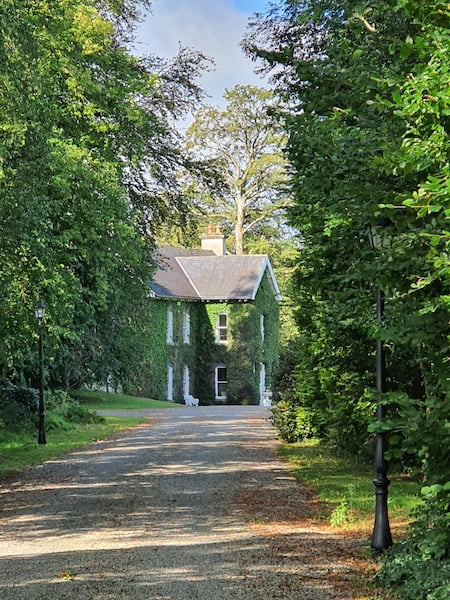
Then came into view the River Clodagh, flowing alongside the garden, a motte complete with castle ruins, an enormous walled garden and an abundance of old trees including oak, beech, lime and horse chestnut. We (dogs included) had found our new Irish home.
Norman ruins
To say this property had history coming out its pores would be an understatement. For my husband, a ‘true blue’ Australian, the history here was incredible. We discovered that we had the ruins of a Norman built castle in our back garden, a house occupied by successive generations of the notable Armstrong family for more than three centuries and a 2 acre walled garden just crying out for restoration.
With my background in garden design, this was truly a gift beyond measure. The wall of the walled garden was pretty much in good shape, with the original cast iron gate miraculously still intact. In fact a visiting heritage conservation specialist has dated the wall’s construction to about 230 years ago, the same age as the property’s historic trees .
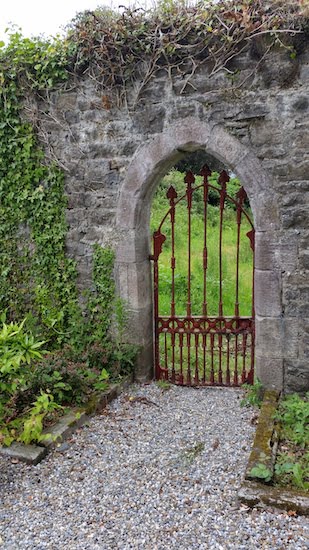
It was obvious that we would get familiar with that enemy called ivy. It was everywhere, obscuring and entangling trees, walls and gates with its rampant growth.
Former owners
The Armstrongs were originally a Scottish border clan. In the seventeenth century, many Armstrongs came to Ireland to fight the royalist cause. Among them was William Armstrong who was granted lands close by at Farneybridge in 1660, in return for his family’s loyalty to the crown. He established himself at Farney Castle and one of his sons, Thomas, acquired the lands and castle at Moyaliffe around 1695.
At that point in time the estate covered about 600 acres of prime farmland. His large family of 14 children necessitated the construction of the first extension to the stone house existing in the grounds.
Over successive generations, several extensions were added, with a Georgian wing being added in about the 1790s. The owner, Reverend William Carew Armstrong, was also credited with planting a parkland of beeches and oaks and a beech walk behind the walled garden. We are so fortunate to have these towering beautiful trees still in the grounds today, albeit reduced in numbers.
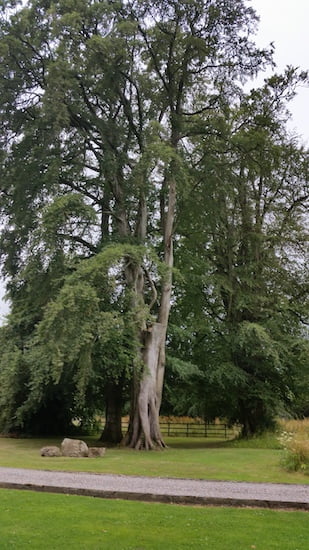
James Wood Armstrong enlarged Moyaliffe House by adding a Victorian facade to the house in about 1865. This is how the house appears today, with ivy covering the walls as was fashionable in the latter part of the 19th century.
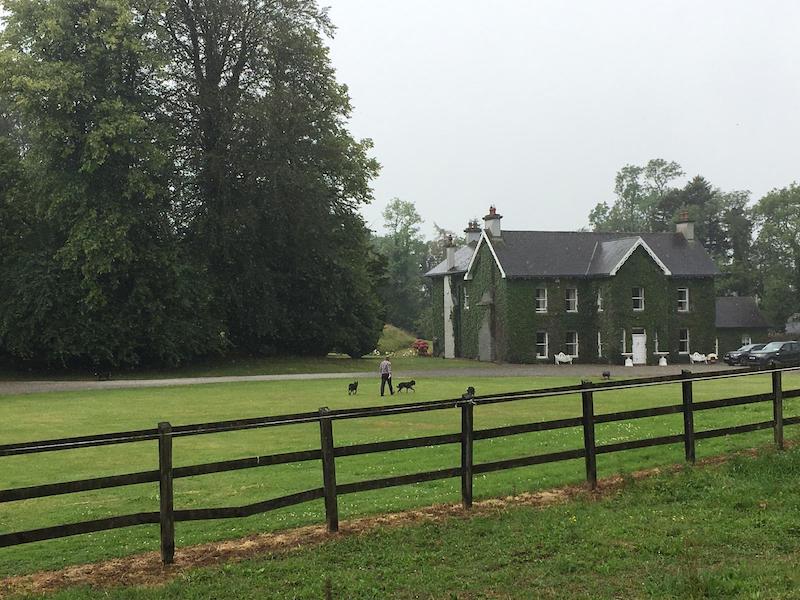
Photographic insight
A most remarkable legacy of the Armstrongs is a vast photographic archive, which we have had the good fortune to access in the Library at University of Limerick. Many of the photographs were taken by Captain William Kemmis who married Jess Armstrong in 1927. He had a passion for photography and captured many domestic and farm scenes, as well as the pursuits of landed gentry in Ireland at the time such as hunting, shooting and fishing.
Looking through the old photographs of the walled garden was a great thrill, capturing as they did the fabulous scenes of horticultural prowess and giving me inspiration for our own restoration.
The earliest photographs, taken in 1888, show the layout of 16 symmetrically planted Yew trees which are still very much part of the garden.

The parterre was planted with a fashionably Victorian series of beds filled with annuals. We have taken inspiration from this and installed a cast iron Victorian fountain bought at auction! The addition of formal paths lined with boxwood completes the picture.

Another photograph shows a group of people formally posing in the garden. One lady has her pet cockatoo on a stand!
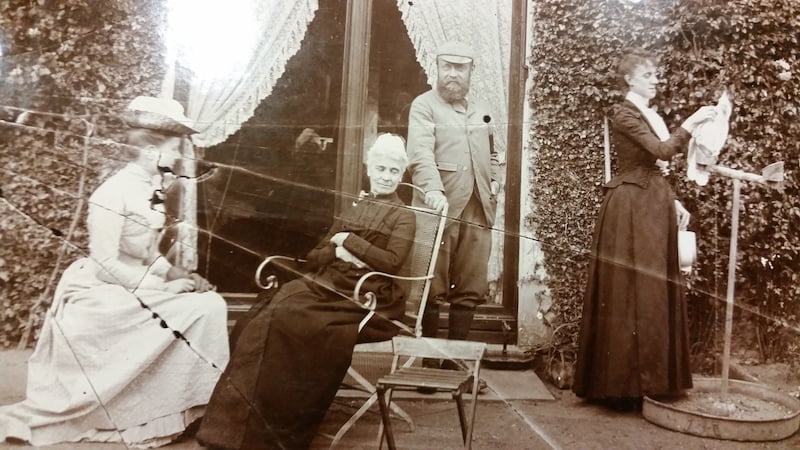
As the whole property is Heritage listed, we had an Archaeologist from National Monuments here to assess the castle remains. How excited were we to find it sits on a Norman motte (man made hill). The stone structure was built by the Butlers, a prominent Norman family, in about 1220! The remains of the castle high at the back of the property gives an aura of mystery, especially if you listen to local lore which recalls a battle on this very spot between the infamous Oliver Cromwell and the local O’Dwyer clan. The battle ended in much bloodshed apparently and those brave warriors may indeed lie where they fell.
Other discoveries have filled us with excitement such as the Ha Ha wall buried under years of soil and vegetation, uncovered accidentally while clearing the boundary. These walls were constructed by the gentry as a form of unseen retaining wall. They kept the stock from entering the parkland near the house and provided an uninterrupted view from the reception rooms.
Another find was a stone-lined well, common on rural properties. We have plans to restore it as well as the original coach house building.
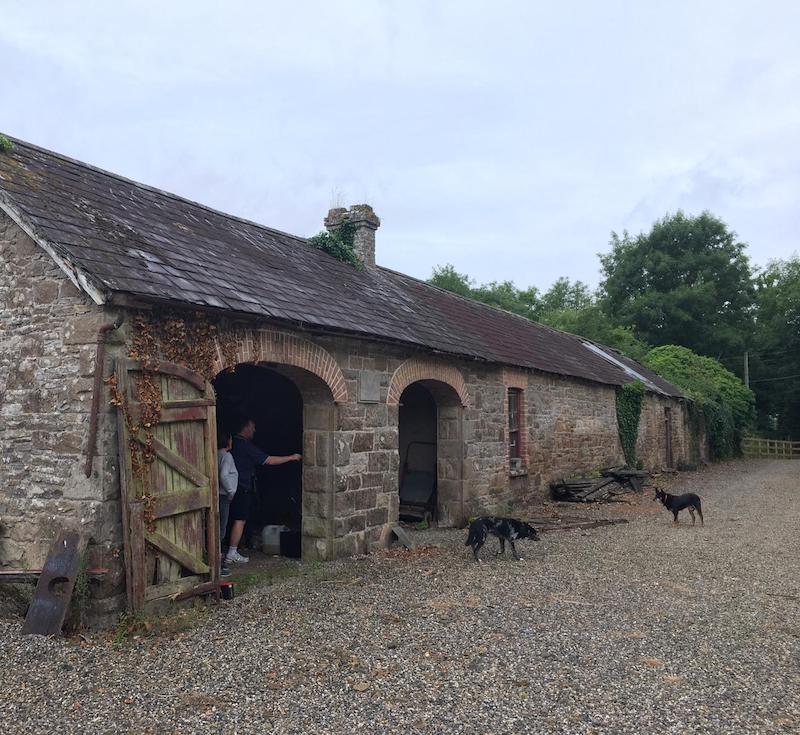
Moyaliffe House will present many challenges but we hope to share it all with visitors on my new garden tour operation. The business, Garden Tours of Ireland, will give visitors an opportunity to see many beautiful gardens and landscapes in Ireland. Further details can be found at Garden Tours of Ireland.
